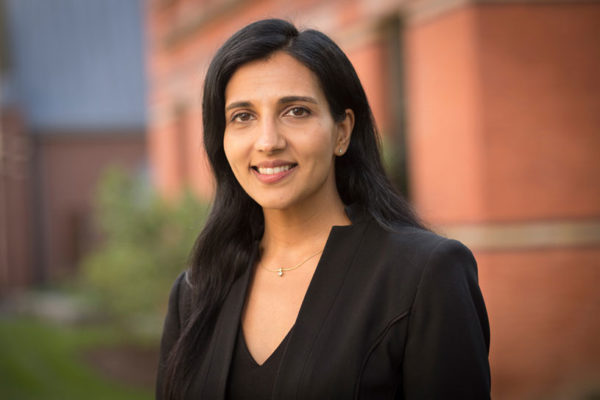Second Opinions Can Make Matters Worse

New research by Sunita Sah finds that second opinions can have complex ramifications on the decision-making process, affecting the quality of the primary advisors’ guidance.
New research by Sunita Sah, assistant professor of management and organizations at Johnson, and co-author George Loewenstein of Carnegie Mellon, sheds light on professional second opinions with important implications for policy makers and consumers. While previous research largely suggests that second opinions help consumers make better decisions, Sah and Loewenstein find that second opinions can have complex ramifications on the decision-making process, affecting the quality of the primary advisors’ guidance, as well as advisees’ accuracy.
Second opinions are often sought to improve decision making. As much as we want to trust our advisors, can we be sure they will lead us to the best outcome? What happens when our advisors have conflicts of interest — in that what’s good for them is not so good for us? For example, do we really need $900 of repairs on our car? Do we really need that expensive procedure that our dentist recommends? Second opinions can be another input to correct not only for random human error but also conflicts of interest. Right?
Sah, the leading author on the paper, reports that it is not that simple. “The mere act of having a second opinion available can affect the primary advisor’s behavior, sometimes triggering rationalizations or activating marketplace norms, resulting in a decrease in advice quality,” Sah explains. “It may even change primary advisors’ perceptions of what is ethical or acceptable behavior — a form of moral disengagement.” A decrease in advice quality from primary advisors of course has an impact on advisees’ decisions.
To observe the interactions of primary and secondary advisors and advisees, the researchers conducted four experiments involving thousands of university alumni. Advisors viewed a grid of 900 dots; some of these dots were solid and some were clear. “Advisees” were shown a very small subset of the large grid, were asked to guess the total number of solid dots in the larger grid, and were monetarily rewarded for accurately estimating that number.
“Primary” and “secondary” advisors assigned to guide the advisees were given varying amounts of information and incentives over the four experiments. Primary advisors sometimes worked as “solo advisors,” with no second advisor available to advisees, and sometimes were aware that the advisee would have access to a second advisor. All primary advisors had a conflict of interest such that they received greater rewards the more advisees overshot their estimate of the solid dots. Secondary advisors were sometimes provided for free to advisees and sometimes at either a low or high cost, and in one experiment, they were of high or low quality (given either perfect or little information of the larger grid). These secondary advisors had no conflict of interest and were rewarded for their advisees’ accuracy.
“These experiments seemed to indicate that it makes sense to seek a second opinion, but not tell the first advisor.” — Sunita Sah, assistant professor of management and organizations
When primary advisors were aware of the presence of secondary advisors, they tended to give more-biased advice (since advisees would get more help, why not make a profit?) than primary advisors who were not aware of a second advisor. Having a second opinion was still valuable, however, since advisees who obtained these good-quality second opinions were more accurate than those that relied purely on their primary advisor.
“These experiments seemed to indicate that it makes sense to seek a second opinion, but not tell the first advisor,” Sah says. However, knowledge about the secondary advisors’ quality and cost also had an impact on the primary advisors’ advice: When the secondary advisor was of low quality or high cost, primary advisors gave more-biased advice; but when the secondary was of high quality and low cost, primary advisors were less biased.
“Primary advisors appear to be worried that their advice could be exposed as being poor in quality,” Sah explains. The possibility of multiple rounds — representing repeat business — also tended to make primary advisors less biased, suggesting concerns about future revenue, as well as reputational costs.
The cost of the second opinion affected advisees, too. When secondary advisors were expensive, advisees used them less. Also, when they had to pay for a secondary advisor, advisees tended to trust their primary advisor more.
“Imagine that we receive advice from our primary advisor, and we have the option to seek a second opinion, but it takes time, it will incur a cost, it will be an effort — those are burdens that motivate us to trust our primary advisor a little bit more,” explains Sah. Sah points out that in real life, second-opinion scenarios are yet more complex. “It’s hard to judge the quality of advice — and even very good advice can lead to bad outcomes and vice versa.” And, while the secondary advisors in the experiments were unconflicted and generally of good quality, often secondary advisors could have different agendas, conflicts, or motivations.
The bottom line: Policy makers should be aware that the availability of second opinions can have unintended consequences.
“This paper highlights the importance of pilot testing potential policy recommendations to see if they have the intended beneficial effect,” says Sah. “For example, if second opinions are made mandatory, do they improve, deteriorate, or have no impact on primary advisors? And what is the resulting impact on the advisees’ decisions?”
The paper, “Conflicted advice and second opinions: Benefits, but unintended consequences,” was published in the September 2015 issue of Organizational Behavior and Human Decision Processes.
